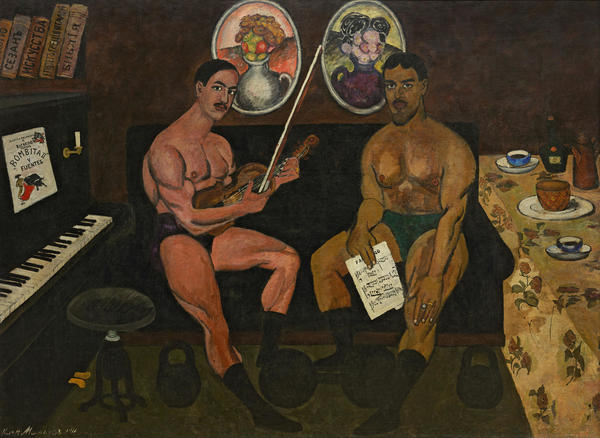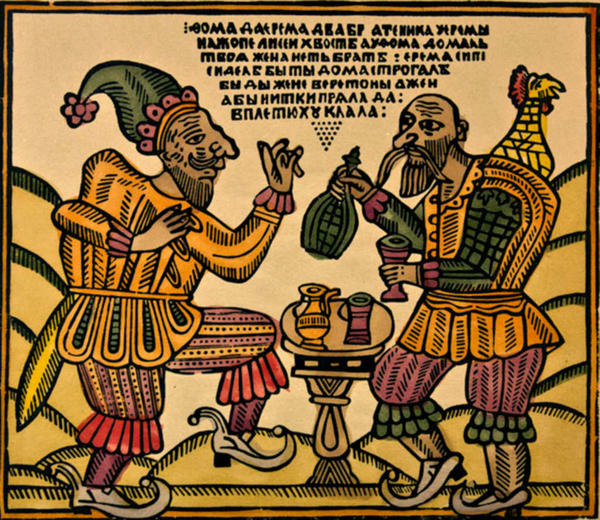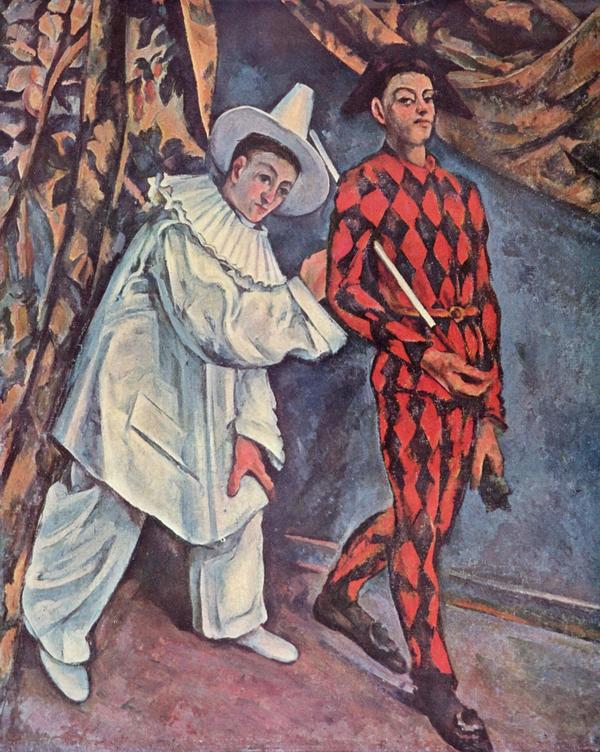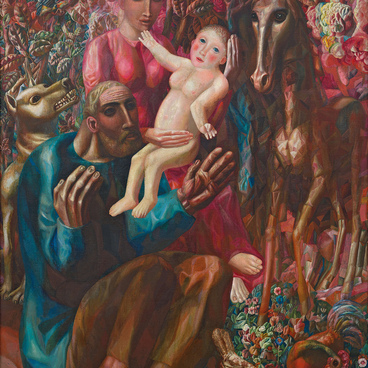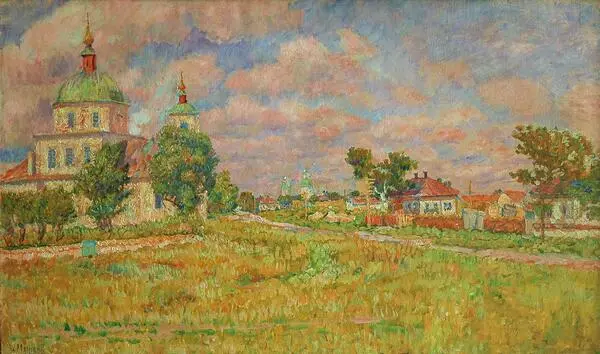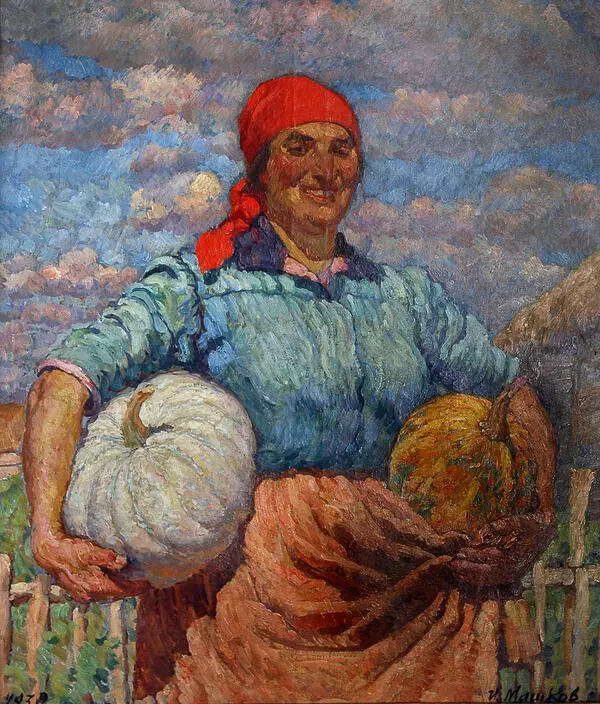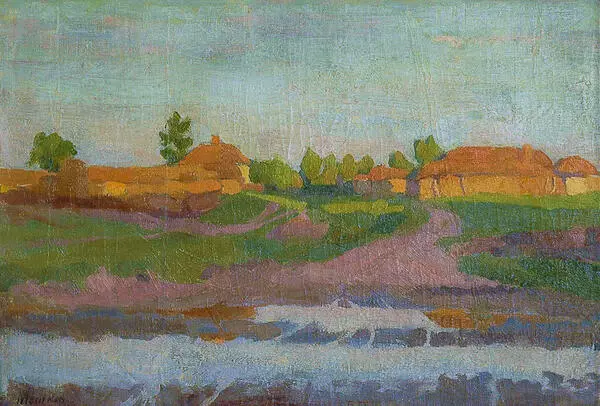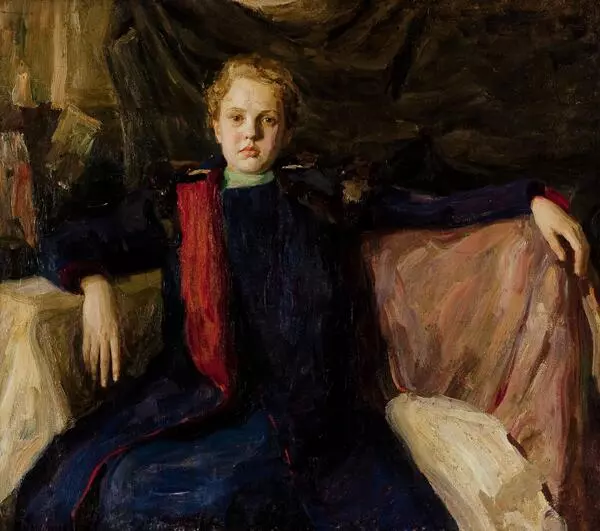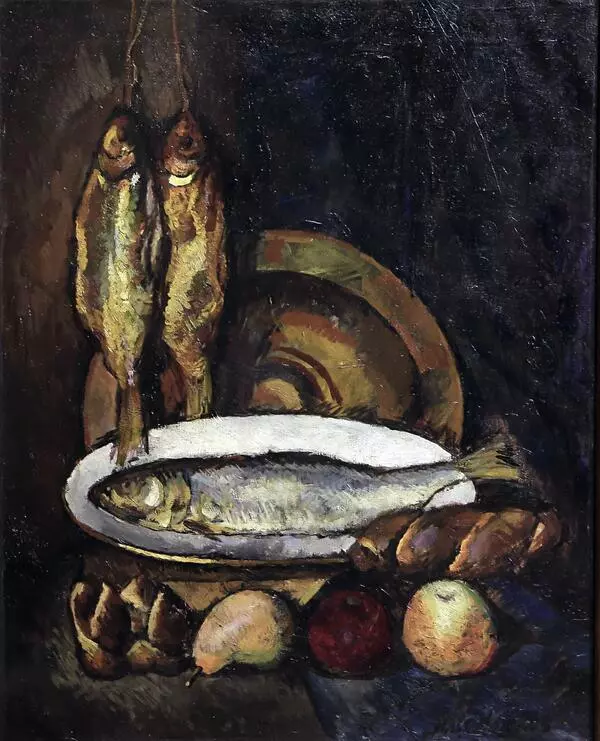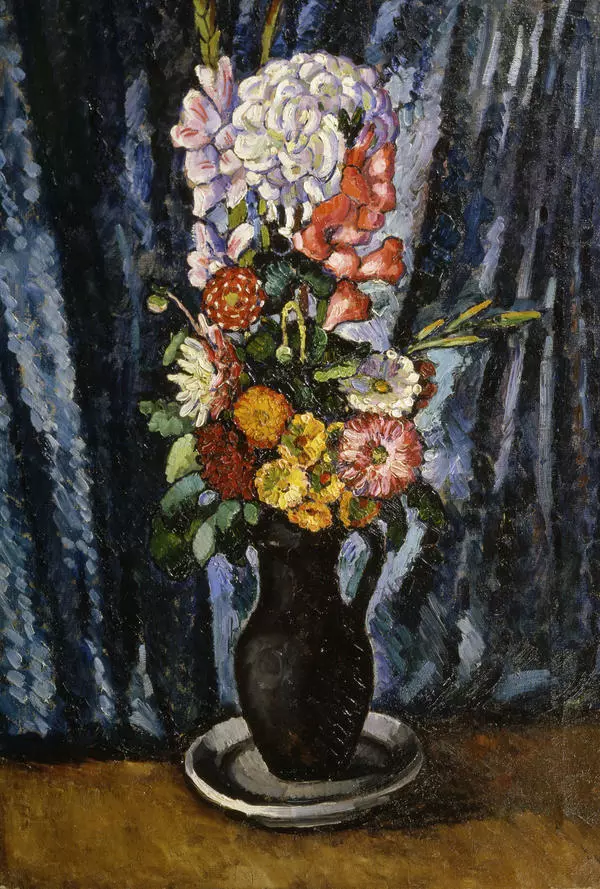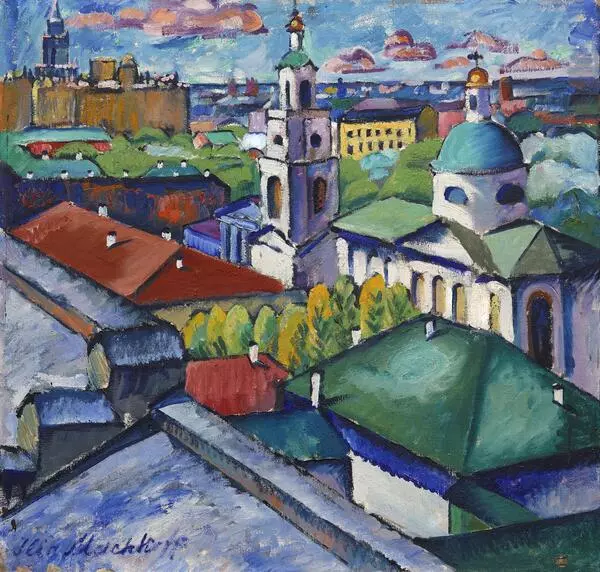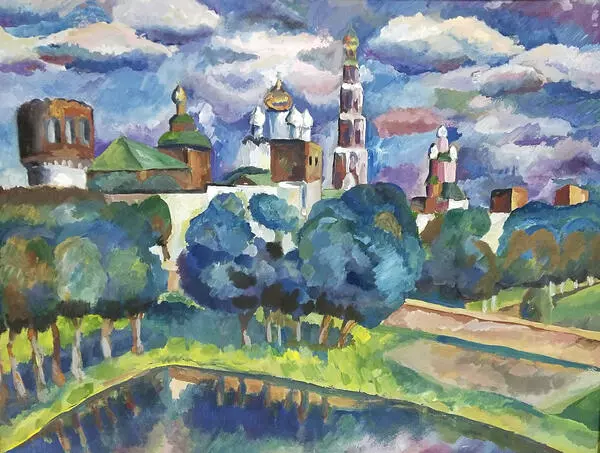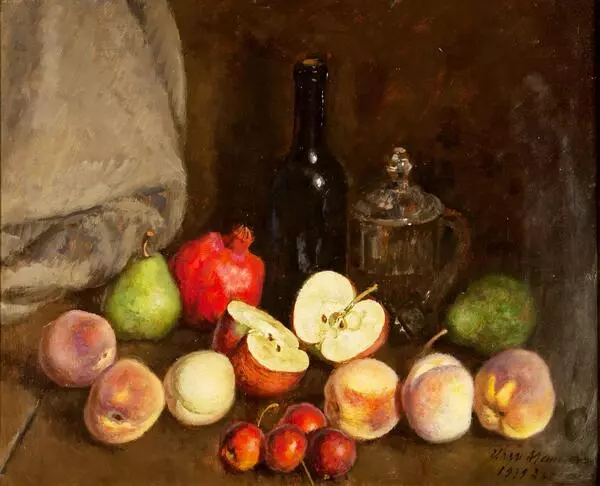First Ilya Mashkov became known as one of the founders of Bubnoviy Valet (‘The Jack of Diamonds’), an artistic association of early Russian avant-garde representatives. Its story started from the cognominal exhibition in the winter of 1910–1911, where Mashkov presented 20 pieces including Self-Portrait with Pyotr Konchalovsky.
Self-Portrait and Portrait of Pyotr Konchalovsky
Время создания
1910 year
Размер
208x270 cm
Техника
Canvas, oil painting
Коллекция
26
Открыть в приложении#3
Ilya Mashkov
Self-Portrait and Portrait of Pyotr Konchalovsky
#2
#4
For the majority of the visitors ‘the Jack of Diamonds’ associated not with art, but with the thieves’ argot, because in French valet de carreau meant a crook and a cheater. By using such a daring name to oppose themselves the symbolism — a very popular artistic style at that time with its fine lofty titles: Blue Rose exhibition and Golden Fleece magazine.
The poster advertising one of the exhibitions by Bubnoviy Valet. Source: commons.wikimedia.org.
#5
Mashkov wrote:
“The majority of the participants of this exhibition liked the title because it arouse the feelings of surprise, astonishment and disgust among the gorged Moscow “petite bourgeoisie”, merchants and nobility’.
#6
It was not just the title that shocked the public, but the exhibited items as well. The exhibition was called a ‘flap in the public’s face’ or “flap to the common taste”. Kazimir Malevich being one of the participants compared it with an “explosion of the most powerful volcano”.
#7
The painting by Ilya Mashkov was by no means an exception. The unconventional huge piece (almost two by three meters) was perceived both as a serious manifesto of a new art movement, and as mockery of conventional art.
#8
In this double portrait, the artist depicted himself and Pyotr Konchalovsky, his friend and close associate in searching for the new language of pictorial art. In general, the “jacks” often painted male images, and later the avant-garde painters developed a worship of machismo.
Valentin Serov (1865–1911). The Portrait of Prince Felix Yusupov. Canvas, oil painting. 1903. State Russian Museum
#9
The painting is a mockery of the academic “full-dressed portrait”. In this genre Mashkov’s professors at Moscow School of Arts, Sculpture and Architecture Valentin Serov and Konstantin Korovin became famous. The future member of Bubnoviy Valet association was excluded from this school for ‘artistic freethinking’.
#10
Ilya Mashkov and other nonconformists believed that art was not for aristocrats and critics, but for the masses. They were inspired by ‘folk genres’: cheap popular prints, signboards, plaster and carved toys. The artists got attracted by simplicity and rich colors of those pieces.
A sample of cheap popular print. The Penza Regional Art Gallery of K.A. Savitskiy
#11
It was not just by hearsay that Mashkov was familiar with folk art: he was born in the depth of the country, in a Cossack village between modern cities Voronezh and Volgograd. His parents were peasants and traders, and as a child he used to work in the shops and painted the signboards.
#12
Western modern artistic trends (cubism, fauvism) also inspired the members of Bubnoviy Valet association. Fauvism and one of its brightest representatives Paul Cézanne especially attracted Mashkov. Dynamism, bright firm colors, simplified shapes and disturbed perspective — in his self-portrait the artist reproduced all these features of this artistic style.
Paul Cézanne (1839—1906). Pierrot and Harlequin. 1888. Canvas, oil painting. Pushkin Museum of Fine Arts
#13
State Russian Museum
читать дальшескрыть
00:00
00:00
1x
Self-Portrait and Portrait of Pyotr Konchalovsky
Время создания
1910 year
Размер
208x270 cm
Техника
Canvas, oil painting
Коллекция
26
Открыть в приложении
Поделиться

